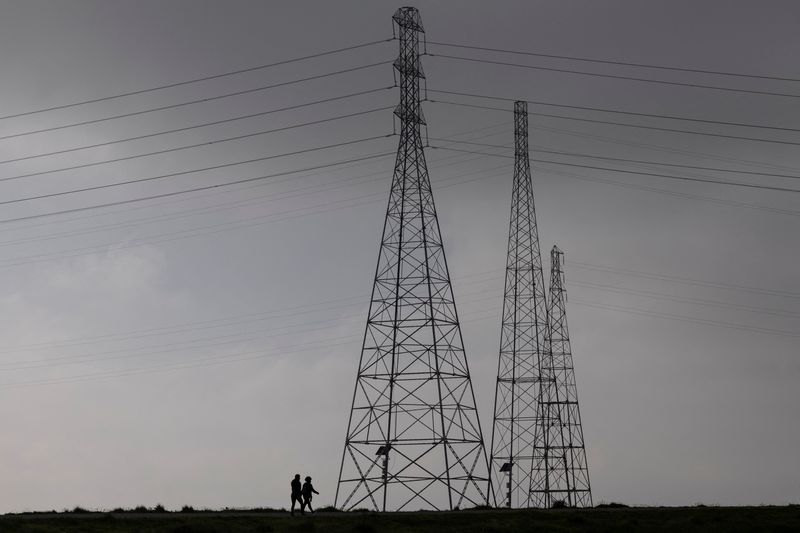By Nichola Groom and Jorge Garcia
(Reuters) – A major battery plant near Los Angeles will be among the largest in the world when it comes online later this year, promising to shore up California’s power grid during the peak summer season and help the state a meet ambitious climate goals.
Calpine’s billion-dollar Nova Power Bank, built on the site of a failed gas-fired power plant, will be able to power about 680,000 homes for up to four hours when charged. It could help boost California’s renewable power industries which provide more than a third of the state’s power needs.
The 680-megawatt lithium-ion battery bank is big even for California, which boasts about 55% of the nation’s power storage capacity, according to data from the U.S. Energy Information Administration. Calpine will bring online 620 MW of the bank in two phases this year starting in the summer and open the remaining 60 MW in 2025.
Battery projects in the hundreds of megawatts are becoming more common. Such large systems exist or are under development in California, Florida, Australia, the United Kingdom and China.
Calpine’s new facility is part of a U.S. storage boom centered in California and Texas, two states with large and growing amounts of wind and solar energy. Storing power is considered vital to the expansion of renewable energy because it allows electricity generated when the sun is shining or wind is blowing to be used late in the day when consumers need it most.
California was a pioneer in mandating that its utilities begin procuring energy storage more than a decade ago. The state is expected to need about 50 gigawatts of battery storage to meet its 2045 goal of getting all of its power from carbon-free sources, up from about 7 GW today.
Calpine, best known in the state for its fleet of gas plants, has about 2,000 MW of battery capacity under development.
Battery capacity has expanded dramatically in California since 2020, when rolling blackouts during a summer heatwave prompted state officials to launch an emergency procurement. Two years later, batteries provided valuable energy during a September heatwave, accounting for 2.4% of generation during evening hours, according to the state’s grid operator, the California Independent System Operator.
“This plant will help stabilize the grid, especially for reliability purposes,” Emily Precht, Calpine strategic origination manager, said at a press conference to unveil the project in Menifee, California.
“When people get home from work and they plug in their electric cars, turn on their dishwashers and air conditioners, there is a high demand for power, (but) not as much solar production. Having something that saves the power from the middle of the day (and) moves it to a higher demand period will help make the grid more resilient.”
New U.S. grid storage installations soared 98% last year, according to research firm Wood Mackenzie, which expects growth of 30% this year.

Battery installations still must contend with permitting challenges and long interconnection queues that are slowing their expansion, Wood Mackenzie said.
They also must contend with gas, which today still provides more than half of California’s power needs.

